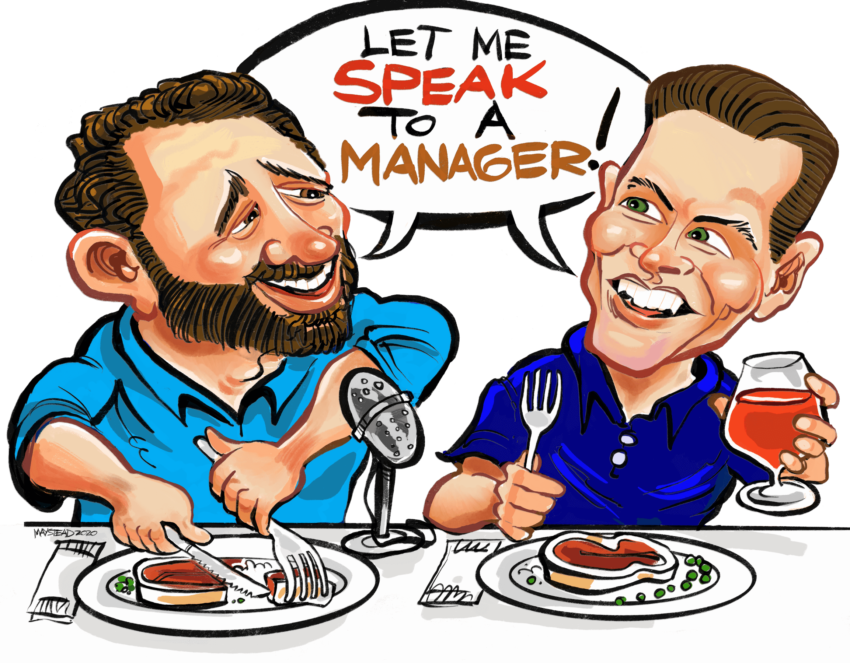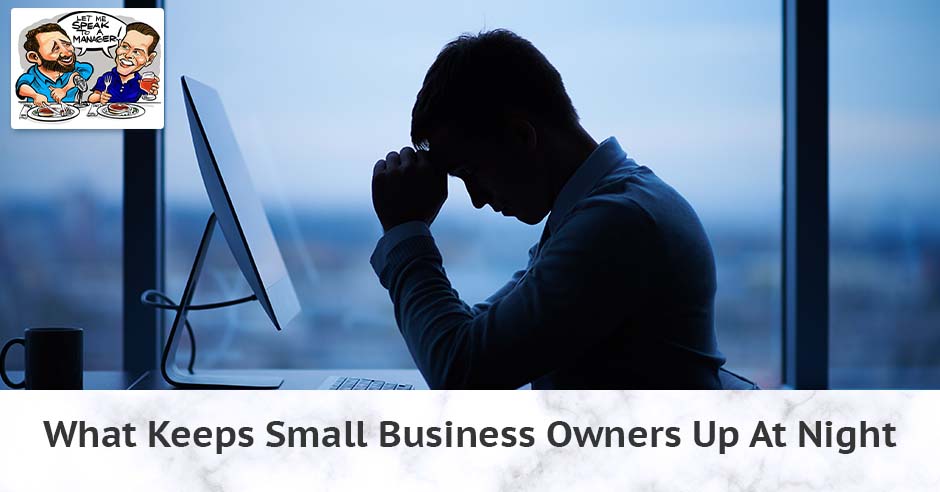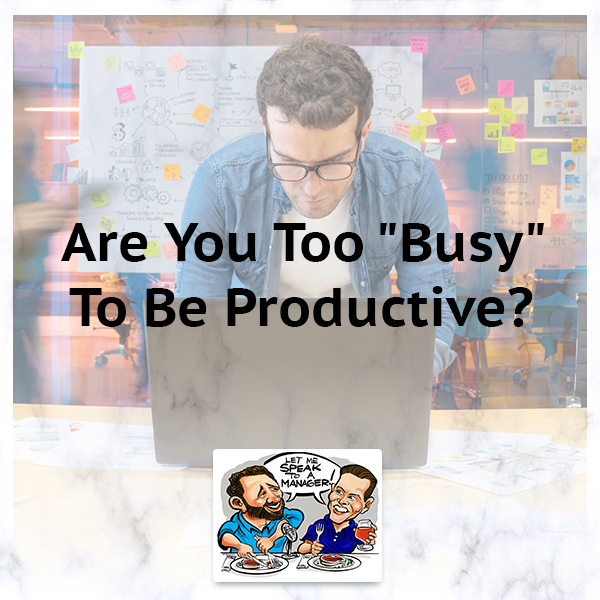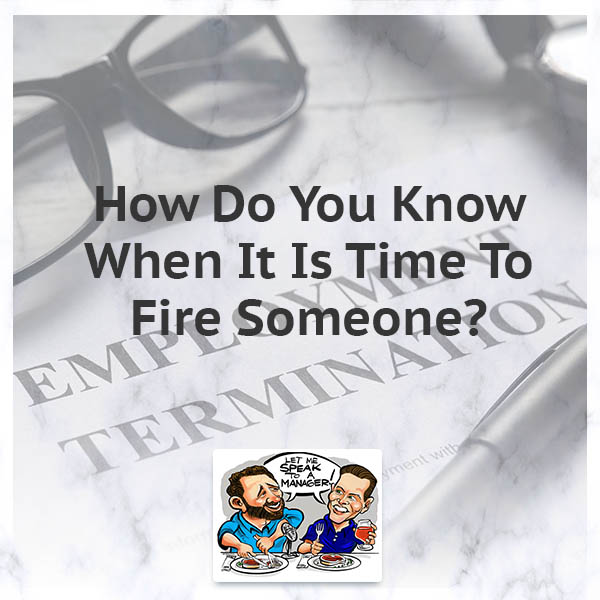Running a small business is an emotional roller coaster. You can have the worst morning of your career and the best afternoon all on the same day. In this episode, Frank and Ian talk about how they stay sane amidst the chaos.
—
Watch the episode here
Listen to the podcast here
What Keeps Small Business Owners Up At Night
And How They Can Manage Their Stress
Ian, how are you?
I’m awesome. We are talking about the emotional rollercoaster that is running a small business and managing through small businesses or startups. Frankie and I were talking and starting on a different agenda that wasn’t this. I kept spacing out, and Frank was like, “What’s going on?” I sent something to Frank regarding our sales progress.
Dear reader, here is what Ian spends a lot of his time on. He has talked about this before. He worked with a gentleman named David on a company called CodeGuard that they have sold. We have talked about it in our back episodes. Ian convinced me and a bunch of other people to invest in this startup that’s like Ring for a car. It’s a car alarm, but it does a lot of the same things. It’s very exciting.
What happens when you’re in Ian’s world is he’s in it every day, talking about it and working on it. They’re on team huddles, team scrums, and all these things. He’s in it every day. Out of the blue, I’ll get a text from Ian like, “How cool is this? Sales are spiking. We’ve got advertising dollars down. All the metrics are going either up in the right direction or down in the right direction. Everything is good.”
It was the opposite of that. Ian was not excited. He’s dealing with a real problem. COVID is going on around the world. China is shutting down again. There are supply chain problems. America doesn’t manufacture anything. You have to get this stuff from overseas. I’m dealing with something similar. I need windows, and I can’t get them. I’m afraid that it’s going to be delayed even further because they’re coming from overseas and it’s harder.
It was one of these things where there’s all this euphoria around business ownership, but business ownership is hard. People talk about the private planes, the cars, and the private schools for the kids, but they never talk about how this is a hardship to deal with. I started asking Ian, “What’s going on?” He’s like, “Listen to this.”
It’s different every day. Frank is an investor. He’s interested to know. Frank put a large sum of money into this. It’s not quite what I did.

Small Business Owners: There are fluctuations in every major business. It has to come down to a strong leadership team and organization.
Thanks for pointing that out.
You’re not involved in it every day. Why would you? You have a lot more in Cava Companies than I do too. We’re both stressed about it, but there are multiple stresses. There’s my personal capital and then my reputation. I got a lot of my friends into this deal. Over $2 million worth of friends’ capital is in Keep, which is our tech startup. I sent him our sales run rate, which is encouraging. As Frank said, I am knee-deep in marketing for Keep. I’m responding to every knucklehead who comments on Facebook, TikTok, Instagram, and YouTube.
I am responding to anything they write. People go to our website and email questions about the product, and trolls want to make fun of the product. I am the steward of our brand because we’re small. I have a little team that I’m starting to build up. We will get into that. I’m very controlling of our brand, sales, and marketing because it’s important to get it up. In January 2022, we were maybe getting a sale every other day.
I’ve shown Frank an incredible bar chart showing that in February, it was a sale a day. In March, it was two sales a day. We’re at three and a quarter sales a day on average so far in April. It was the best revenue month. We’re going to do $20,000 in revenue. We had a $3,000 revenue day. This is all coming from marketing that is being done on Instagram, Facebook, and those things. Our cost per sale keeps going down. At first, it was $300, $200, and then $150. We’re getting every new sale acquired for about $100, and this is a $200 device.
I had a lot of exciting things to show Frankie, and he gets excited if something good happens in our real estate deals. I’m a passive investor or someone who helps them raise money. He likes to share good information with me. I’m dragging my ass into the Zoom call and feeling bad for myself because we learned if you haven’t been reading the newspaper, there’s a supply chain problem going on. To make a device like ours that has twenty utility patents on it is pretty much a new invention.
We have a contract manufacturer. They’re making it in China. They sprung a big game-change order on us that hurt our trust. We didn’t see it coming. We have several hundred customers that preordered with us and gave us $200 going back as far as December 2021 that are expecting us to send them a device in July 2022. We’re not sure if we can use the same contract manufacturer. In addition, there’s the other one that we have worked with in the past. We’re scrambling and talking to them about it.
Long story short, what was a bill of material of $150 to sell these $200 that we were going to grind down to hopefully $80 at some point is now going to cost us somewhere north of $1,000. Most of that is in the circuit board. Circuit board chips are the reason why you can’t get a car in a lot. That’s why you can go to 5 dealers and see 5 cars of inventory. If companies like General Motors, Ford, and Toyota can’t get circuitry and chips to sell vehicles if they don’t have the pull, what pull do we have as a little startup going through it?
What's important is you have people who are good enough that you can trust them and give them autonomy in specific areas. Click To TweetI’m talking with my partner in this deal and having some pretty tough conversations, “Do we still ship to the customers who preordered? That’s going to cost us several hundred thousand dollars.” The value of that is you keep your word. They preordered and trusted you but the bigger picture is we do need people using this product so we can learn from them and see what mistakes are happening, what better instructions we need to give for installation, and how it runs and works to some people using our cloud service and all of those things. We need some users testing it that aren’t our engineers who know it well.
Stay in a slightly different way because the supply chain problem is change orders. You may have to pay a significant premium to get valuable feedback, but it’s at a very significant premium. You can’t make up this kind of loss on volume.
Do we call all of them Frankie and say, “You trusted us. We appreciate it. We want to be very honest here with you. The supply chain has messed everything up. We’re going to send your money back and give you a $100 gift certificate because we appreciate the fact that you stuck with us.” We’re having to make decisions like that, what does that mean, and what does that do.
This is coming up on the fact that at some point, we raised $4 million of capital. We have a product that works. We have proven to the market that we know the cost to sell these things and that there’s a market for people who like the product. We have to raise more money, which we would have had to do anyway. We have to raise $2 million more money. There are all things that I’m battling.
In a startup, you can be sky high one day, and the next day you think you’re going out of business. Business, in general, is a rollercoaster. Even in working for a big company, I always felt that but not anywhere near what it’s like in a startup or a small business. The stakes always feel so much higher. You’re so much prouder of your accomplishments and harder on yourself when something doesn’t go the way you wanted it to.
The other critical piece of this is going to get us right into point one. As an owner, there are rollercoasters. Ian talked about rollercoasters. There are ups and downs. I was dealing with a staffing issue. I deal with problems. I get no credit for anything anymore. All I deal with are the issues. That’s what gets brought to me as problems. If you don’t have good people and a strong organization around you, it manifests and goes to the entire team. If your team feels the rollercoaster, they start thinking about all the things they should start thinking about, like updating their resume, “Is this the right place? Is it stable?”
What’s important is to be able to be the pincushion. That’s what David has with Ian at Keep. That’s what I have built here. I have a strong organization. We’re going to get into a debate about, “Should you have a number two or a team of number twos?” It’s important because there are fluctuations in every major business. You tell me that Twitter isn’t going through fluctuations with Elon Musk trying to make a hostile takeover bid. There are fluctuations happening. It has to come down to a strong leadership team and organization. It’s systemic from the top down, or everybody feels those things.

Small Business Owners: When you’re talking about an organization where people have different departments, you’re not putting all the burdens of running the entire business on any one person. They don’t feel taken advantage of.
We’re going to talk about a few things on how small business owners sleep at night. That’s a good segue. Number one, you have to have good organization. I’ve been a part of startups where I’m just a freelancer, a part of a team, an investor, and an executive. It’s a lot more fun in the latter when there’s an organization. When I say organization, it’s not the same in my opinion as a big company where you have these big bureaucratic org charts.
What’s important is that you have people who are good enough to trust them and give them autonomy in specific areas. It’s people you know you’re going to make the right decision. People are making decisions in their respective areas. For us, at Keep with this tech startup, David has got his hands in everything. His reputation is on the line with this company. He, like me, has also raised a lot of money from friends and family to go into this.
He’s right there in Atlanta with all the engineers every day. We have a guy, Jonathan. He’s our Chief Technology Officer or CTO. He makes a lot of decisions. He’s incredibly bright. He’s great with our engineering team. He keeps things moving along so that when David needs to get involved for a while in capital raising and marketing or something related to patents, Jonathan is controlling things. He trusts him to make decisions and move things along. It’s the same with me.
Largely, David and I talk multiple times a week about what I’m doing in sales and marketing. I have an agency that I work with. I’m constantly tweaking, testing, and doing different things. I’m a little bit siloed from what he’s doing on the engineering side. We will get into that, on focuses. That helps relieve your stress knowing there’s someone you trust. Jonathan is the CTO. Jonathan worked at CodeGuard with David for almost a decade. He trusts him. He has known him for a long time. I trust Jonathan. He’s a smart and strong guy. He’s the perfect guy for that role. David and I have worked together for years.
He’s committed. He’s rowing in the same direction as you.
He bought in. He owns equity in the company. He invested his capital. He’s in with us. He’s ride or die. We are going to make Keep work. I’m the same. I’m there with David. I’ve been there with him forever. He knows I’m not going to make decisions that are not in the best interest of shareholders because I care about shareholders. I know their names as he does.
What I would come to you on this are a few things. I’m a big part of a mastermind group. The broader context of the business world didn’t have what Ian and I have and most people in startups. If you look at a chart of successful business owners, the older the person was when they started it, the higher the success ratio. People that start businesses in their 50s are more successful than people in their 20s, 30s, and 40s. It starts to tail off in their 50s, but 50s and 40s are significantly more successful long-term than people that started in their 30s and 40s.
If you want to be the owner that keeps most of the equity, you better be in the weeds with everyone. Click To TweetIt picks back up again in the late ’80s and mid-’90s too. Those startup owners dominate.
The reason I say that is usually when you start something later, you have more money or experience. We have two different masterminds that I’m a part of. We’ve got a group of people at the higher level who are in the average age of 40 to 45. The average of the smaller group or the group that does fewer deals a year is in the high twenties. Almost nobody in that group has corporate experience. They just got out and started it. What they struggle with isn’t gumption and ideas. It’s usually capital, funding, and organizational structure.
If you don’t have the organizational structure that Ian and I have or haven’t gone the corporate route first, people struggle with this. When I’m in a mastermind and look around, I see CEO-level people worrying about things like email. There’s a guy that’s constantly checking his bank balances. Whenever I walk around the room, he’s always on his phone looking at his bank balances. There are two things. If you’re in your email and you’re on your computer looking at your bank balances on your phone, you’re spending all this money to be there, and you’re not paying attention.
What kind of a vibe does that give off to the people who work for you if those are the things that you’re constantly doing? You can’t look up and properly lead an organization if you’re not leading it and you’re in the weeds in the woods. I say this from the spot now where I have a team around me. In the old days, I did those things. I went away for ten days. Ian and I talked about this. I forgot to pack the power cord for my computer.
I ended up having someone from the office mail it to me. I was packing up to leave, and I hadn’t used it. That is a luxury that I have gotten to where I have a staff. I can call people. You have to build these things over time, but there’s an insular nature that you must focus on where everyone doesn’t feel what you feel because if they did that, they’re not owners. They’re employees, and employees don’t want that level of stress. You have to be able to put up a wall and keep people out of it.
Even within an organization, it helps if the owner is involved in everything all the time and a little bit of everything. There’s the team that you’ve got working for you. Frank and I were talking about this. Do you have a strong number two that’s also involved in everything? Is it better to have maybe 3 or 4 senior people that have their silo or focus? I’ll give you an example. On the front lines, I am answering the questions of customers every day. I am trying to overcome objections that people might have and convince people why they should preorder months in advance.
A scrum is a daily call where the engineers talk about what they’re working on. If I were on every engineering scrum, I would be too nervous about being an effective salesperson because when you’re inventing a product, there are always problems, “It’s not working.” I try to stay away from it and say, “David, tell me the features it’s going to do. I don’t need to know every time you are worried about whether it’s going to get there or not. Tell me what it’s going to be.”

Small Business Owners: If you don’t have a whole hierarchy or structure where you can promote from within, you run into these problems where you constantly have to have on a cape and come in and save the business. That doesn’t have legs.
I stay in my lane, give him the scrum from time to time to know what’s going on, and follow everything in all the Slack channels, but I don’t get as nearly as knee-deep as David does in the technical details because he’s our lead engineer. I focus on my role, which is sales, marketing, website branding, and all of the front end of the business. I let him handle the rest. That’s important in an organization. You’re not knee-deep in every construction issue. If you were, you would never want to do another deal again because you would have to see all the sausage getting made.
I have a perfect story for this. This was years ago. I hired this woman who was in charge of doing all the checks. I would be out in the field either looking at a project or a new deal. I came in, and there were four checks on my chair to sign. I’m like, “Why are these here?” She’s like, “These came in.” Every time I’m out trying to push the thing forward, I realize I have expenses going out. What we did is I built a system where we pay bills twice a month. I know what days they are. It’s planned in advance. I get to think about a critical activity two times per month. That’s it. I get to work on growing and pulling a business, not being pulled back by the burdens of the business.
That’s what Ian’s talking about with scrum calls. If he gets into the scrum call, he’s getting too detailed. He doesn’t need to be detailed. He needs to understand, “Did we make a fundamental change? Did something go this way?” Making the sausage is an ugly process. Ian needs to understand that when he’s got beautiful links that he can put on the grill, he will sell the sizzle. These are the types of things that we’re trying to drive at. You must be able to control them yourself. In a small business, no one is going to do it for you. You have to have the foresight to say, “I can’t spend time here because it’s detrimental to the bottom line. I’m going to pivot to this scene.”
I see this a lot of times. People are like, “I’m the visionary. I‘m going to go hire an integrator.” It’s traction. It’s a visionary and integrator. What that means is you’ve got a CEO and a defined number two. That works, but it also ends in a breakup a lot. Two people start a business, and they don’t like each other anymore or have different visions. There’s a business divorce. I’ve seen more businesses fail because of a business divorce than anything else.
What I like to do in my business is have strong people around me. They make me and our team way better. It’s better for the business. We have people who run departments. We have 5 or 6 different department heads, depending on how you want to shake it out. That makes us a better business. We are better and smarter people because there are 7 brains and not 2. At the same time, it’s insulated in a way that there can’t be a business divorce. That’s better for the longevity of a company, in my opinion. That’s what I’ve seen happen quite often.
If you’re going to be the owner that hires an operator, I want to get a little less hands-on. I’m going to hire an operator. Where you get the business divorce is you get the owner who wants to keep almost all the equity and make the operator do all the work. If someone is truly running all facets of your business and you’re the guy who started the business, and you gave them control over all of the operations, what starts to happen with that is the COO or whoever is involved resents it. They’re like, “I’m running this. Why are you getting all the profits? I’m not paid enough.”
When you’re talking about an organization where people have different departments, you’re not putting all the burdens of running the entire business on any one person, so they don’t feel taken advantage of. They don’t feel like, “I should be the owner of this business because I’m doing it all.” They have departments. If you’re going to ask someone to run your whole business without the equity, at some point, that ends poorly because as they have enough capital to start their business, they will do their business. The whole idea of, “I need an operator,” the only way that works is if you give them so much equity that it makes sense, and you go hands-off on it and maybe buy something else.
People are under this myth that you can bring someone in and it's a lifetime appointment. It isn't. It's going to change and morph. Click To TweetOne of the things we had as our first bullet point was a defined hierarchy with appropriate autonomy at every level. If you have a number two and you’re hamstringing them on comp, you’re going to lose your number two. I’ve seen these things fall apart for the reasons Ian mentioned. I’ve also seen it for the number two. It’s like, “I want to do a different business. I’m no longer passionate about this. I’m moving.” There are other factors, but that’s the other side of building out a team.
If any of those reasons happen with the number two, you’re screwed if you’ve been out of the game. If you give away operations for six months, you won’t recognize your business when you have to get back in. Everything changes. Software is moving around. People are different. Processes changed. You try to get back in the loop because you gave all power to one person. Whereas if you had five people and that power is distributed throughout, one person doesn’t crush you.
The other side of it is this. I hear this all the time, “I’m going to hire somebody and be done with it.” People are under this myth that you can bring someone in, and it’s a lifetime appointment. It isn’t. It’s going to change and morph. If you don’t have a whole hierarchy or structure you can promote from within, you run into these problems where you constantly have to have on a cape and come in and save the business. That doesn’t have legs.
In the beginning, when I didn’t have the staff or the finances to be able to do this, that’s what I would do, but it’s exhausting. You’re constantly pulled back into things. That’s the difference between where Ian is with Keep and where we have gotten to in our businesses. We have good and strong people around us who make good decisions. We start to have a staff. We can promote people from within. It’s a very different thing. It’s a spot to get to.
There are these things called valleys of death. They’re constant. They happen 4 or 5 times in the arc of a business. Getting through the first one is hard because it’s usually just you. Once it’s you and ten people, there’s another one. We’re now getting over 50 people. It’s the next rung for us. You’ve got to earn this stuff. It doesn’t happen but thinking of it with our eyes wide open is a big way to look at what the future will hold.
The last thing I’ll say on this is you have a 50-employee organization but what always strikes me about you is you stay highly involved in sales and the details of construction. You know your debt and finances. You have people in those positions, but you’re in tune. You were joking around it. You were within $500,000 of exactly how much debt your business had, which is not an insignificant amount. You knew it off the top of your head because you’re the one signing off on all of it. That’s appropriate.
You are 100% the owner of that business. You should know all the details. I’ll say the same with David in Keep. David has the majority of the shares of the company. I have no problem with it. The reason why I don’t have any problem with it is he knows enough about every facet of the business, and he’s willing to roll his sleeves up. He’s testing and engineering. He will get into the Facebook Ad module with me. He goes into all those details.

Small Business Owners: One of the main reasons that keep any small business owner up at night is capital cash. If you’re going to be in business, the amount of available capital to you drives almost all of your decision.
If he was hands-off and telling us, “Go build a business,” we wouldn’t be cool with him having as many shares as he had. He’s so involved in everything. He has earned it. We all have plenty of shares, and we’re all going to do well with it, but if you want to be the owner that keeps most of the equity, you better be in the weeds with everyone. You better be willing to grind, not live on. You better be willing to do it and know what’s going on.
Let’s further this one more time. We will move on to bullet point two. If we go to 250 employees, there is no way in hell I’m going to know as much about every single department as I know now. We can’t get scale if we have that. What will be important is the hierarchy. Who runs the department? Who’s under them? How do we report and talk about it?
Your head of sales and head of construction better be great. You better have a great metric system where you can tell across ten different metrics how well your construction guy is doing.
These are things to think about. You may say, “I don’t need 50 employees. I certainly don’t need 250. I need fifteen. That’s what I want.” That’s cool. You can land there, but you have to understand where you’re at and that you’re not making these decisions alone. Everybody who works there has their opinions of their lives and where it’s going. There has to be enough risk and reward. They have to feel comfortable and secure. That’s why we talked about keeping the rollercoaster away from them.
The title of this episode is How Small Business Owners Sleep at Night. One of the main reasons that keep any small business owner up at night is capital cash. If you’re going to be in business, the amount of available capital to you drives almost all of your decision. That’s what keeps most up at night. If you equate it to individuals, all the folks that are panicking on Twitter because the stock market has had a tough year or crypto are down 30% to 40%.
Anyone worried about the stock market, and I’m not included, has too much of their net worth tied up in stocks or crypto. They don’t have enough cash. If you had more cash, you would be excited that the markets have all dropped. What did I recommend you do, Frankie? What was my recommendation to you from an investment perspective?
Take $1 million and put it into stocks.
You have to have a well-defined North Star. Click To TweetI told Frank, “Go sell some of those awesome houses you bought that have done well and go buy the market now that there’s a dip. There are some great sales going on. Go get yourself a big chunk of capital and put it in stocks.” He’s not going to do that big and crazy thing, but I bet he goes and buys some stocks after I said that because his one asset class has done well, and the others come back. He’s got the cash to do it because he’s smart.
It’s the same in business. If you’re raising money, always raise a little more than you think because surprises will happen. In a business that runs short on cash, make short-term decisions 100%. If you are beholden to debt or leverage and don’t have the capital, you miss the best opportunities and end up selling too fast or quitting on the best long-term opportunities.
We have talked about this multiple times. We talked about it in the Inflation episode that we did. One of the things that I preach around here is you have to take what the market gives you. The market was giving away houses from 2012 through 2015. We took a huge market share of that. What the market gave you right after COVID were low-interest rates. Those have gotten jacked way up. They have gone up 300 basis points.
In 2021, we refinanced almost 200 units, which is $60 million worth of real estate at rates that are now 200 to 300 basis points. It’s 2 to 3 points lower than where the market is now. Taking money out matters. Another thing the market is giving you is we had a president who has left office and was a real estate mogul. I’m in real estate. He wrote the Tax Code, and he benefited, and so did I. It’s understanding what expired on April 15th and making sure that we took advantage of every single tax loophole or tax law written into the Tax Code before it changed into the year 2022.
What we did is this thing called bonus depreciation with cost segregation. It still exists in a new Biden code, but they only get 80% now. In 2021, it was worth up to 100%. For me, that’s almost $1 million of extra cash that I have to come up with. How much you make and keep is huge. There are three major things you can focus on. There’s your revenue. Do you have good revenue? What are you spending? Do you have debt? If so, what does it cost?
In our business, the thing that we focus on is how overhead is expensive. We have good people. We get a good return on that, but we have to pay attention to it and look at where we are spending other dollars and what’s the cost of debt. Most of our debt is secured with real estate, where we collect rent. It makes a ton of sense, but these are things you constantly have to measure, or you’re going to run out of cash. To people in the real estate business, you hear the term, “You’re cash poor.” Whenever you see a good deal, you go out and buy it. It requires cash. These are things that you must pay attention to.
What can you do about it? In my opinion, if you are raising money, if you can get debt cheap and build up some cash so you’re not low in the bank, and if you can raise capital from people that you know and raise more than you think you’re going to need, you never know where you’re going to have unexpected cash problems. I started this call when we got a significant change order from our contract manufacturer. You have to have enough capital to withstand that and continue to run your business.

Small Business Owners: If you are beholden to debt or leverage and you don’t have the capital, you miss the best opportunities and end up selling too fast or quitting on the best long-term opportunities.
You have to be confident that you can consistently generate revenue at a decent cost. You have to know, “Where do I find my leads? How do I acquire them?” Know your numbers. If you can consistently bring revenue in where it’s not just big projects or big chunks here and there, and you go a couple of months without it, that’s a business owner that’s not sleeping when you don’t have consistent lead gen and revenue coming in to pay those bills.
Our next bullet point is if you have a well-defined North Star. Ian usually introduces the topics, but I’m going to do it on this one for this reason. I know my North Star. My North Star is in Richmond, Virginia. In Virginia Beach, I can find single-family home inventory cheaper than you. I can do it because I’ve been doing it for years. I spend more money. I know all the right places to do it. I could find it. What I need to understand is where the market is and what’s a discount.
I have to be able to connect the dots. Ian will call me up and say, “The stock market is on sale.” I, by and large, don’t know that. I’ve heard. People are texting me, “The market is going to hell,” but I don’t track it day-over-day. I know the prices of real estate and what has moved. I know that real estate is flat to maybe down about 3% in the past days. I know what to buy it at and where someone who needs to buy it from me I need to sell to. I know those numbers.
My North Star is knowing what real estate is worth. I know how to find it. I have multiple disposition strategies, but my North Star is very clear. Find off-market property for below market value. That’s a hard business to ever go out of business in because if you can pay less than it’s worth, no matter the market, you can find someone who will pay for it.
You don’t stray from that too much. Let’s stick with Keep here. We are looking to be the best car theft deterrent in the market. We have a number of features that no one else can offer. For us as a startup, nothing is more important than doing what we say we can do because our first products are going to hit the market. Nothing is more important for our brand than a product that does exactly what the advertisements say and what our website will do. We would rather not ship than ship a product that doesn’t live up to what we said.
We’re not Procter & Gamble. We can’t go market our way around it and figure something else out. We have to be very focused on staying in our swim lane, even though you get lots of people on social media saying, “It would be great if you could incorporate a kill switch. Have you thought about a product that you could use for motorcycles? Could you extend the range of your sensors for full-sized vans?”
We’re a startup. The answer is no. One day we could do that. We have a lot of people asking us if we can put sensors under the vehicle for catalytic converter theft that has been happening rampantly. The answer is going to be yes, but now it would be a distraction from selling our main device, which is our flagship product.
If you're raising money, always raise a little more than you think because surprises will happen. Click To TweetI’ll use one other example. In my 5on4 Group, I have people ask me all the time, “Can you come to talk to my sales team? Have you ever done a keynote speech on mindset?” I’m always thankful that they reach out to me, but with Keep and other things I’m doing, the answer is no because I would have to build it. It’s not in my bailiwick. If you want new manager training, I have a great program. I can do it in groups. If you want to do it with a group of 5 to 10 managers, here’s the price. We can set it up, but it’s on my terms. I don’t have the time or the organization to build new content with all the other things I’m doing.
My North Star on 5on4 Group is we do new manager training for big organizations. That’s it. It’s about $35,000 to $40,000 a pop. If you can get a cohort that big, you got me. I’m in. I’ll work with your team. Here’s how we set it up. I got the whole thing put together. It’s a great offering. If I were to go outside of that, it would either stress me out way too much or it wouldn’t be a great value to the customer for what they would have to spend because I would have to build it all and charge them for that. I don’t think that’s the North Star of what I do with that business.
One of the things that I spend a lot of my time on as an owner and manager is telling people no. I tell staff people no. They’re like, “I’ve got to deal with so-and-so. It’s two hours from here. Should I go do it?” I’m like, “No. That’s two hours. They’re going to be in an appointment. It’s two hours back. You’re going to spend a whole day doing that. You’re better off calling 15 to 25 leads in the core of where we work and focusing on something we’re good at.” Let’s say you get something under contract two hours from here. I’ve got to figure out who to freaking sell it to because I don’t have a buyer’s list there. It causes a cascade of problems.
You don’t have realtors that way. You get outside of your infrastructure.
It starts to take a massive toll. I remember these people who I thought were assholes. They weren’t assholes. They were just more successful than I was at the time. I used to always say, “It’s important. The best decision you can say is no.” When you’re struggling with money, it’s hard to hear that. The truth of the matter is it’s something you must hear and implement. The people who do it very well do a moderate amount of things.
A star quarterback plays a star quarterback. In this market, that’s north of $40 million a year. I’ve used this example a bunch of times. I went to the University of Florida. Steve Spurrier used to also punt and kick field goals. The quarterbacks weren’t as valuable back then. They’re more valuable now. They do one thing. They say no to everything else except playing quarterback. In your business, you have to pick and choose these things.
You have to be mindful as a new business. You might have the wrong business plan and say, “I’m going to say no to this.” You realize, “My business might be better off there than here.” That’s adapting and moving to different markets. Don’t be completely shut off to that. At the same time, you have to know where you are and what you’re doing if there is time to make a pivot for sure.

Small Business Owners: The best decision you can say is no. When you’re struggling with money, it’s hard to hear that. The truth of the matter is it’s something you must hear and implement.
Ian showed me the 2nd and 3rd iterations of Keep. They’re cool. I’m like, “That one’s awesome, but it’s not where we’re starting because we got to start with the first one and make sure it works. We have enough technology.” It’s not a bad idea. It’s still the right idea to bring to market, but there are iterations and second products. There was the iPod before the iPad and the iPhone. These things are iterative, but they knew what they were doing, and they follow a line.
Show success in one before you branch off to the next. We have talked about cash a little bit, but another thing that a great owner knows is how to manage that cashflow. There are four things that we talked about leading up to this. One, do I know the cost to acquire a customer? Frank knows that in-depth. He knows exactly how much he spends on his postcards, TV ads, and internet ads. He knows what each of those should be driving from a lead and what those leads turn into. Any business owner needs to understand that more than anything. What does it cost me to acquire a new customer?
What you will do in the beginning because you’re going to be small is do this a little bit with your gut. You still need to track it, but you’re not going to be able to track it nearly as well as I can track it with ten people responsible for tracking. It’s as long as you know, “I’m spending money here. It’s working for these reasons. This is about what I get back.” Even when I was using my gut, I’ll show you what happened. We were sending postcards to 55 ZIP codes. I realized 90% of our earnings came from thirteen.
I did that for years. We were still profitable. What I did were cut 40 ZIP codes. That cost us no business, and I saved a ton of money. What I did with that savings is I reinvest it into television. These are little things that you can do and track. It’s very hard to do it when you start. I’m sending out pieces and making enough money to pay the bills. That’s the first metric. You have to quickly look at it, “From a macro, does it work? Is it bringing us people? Does it feel good?”
I’ll give an example and turn it back over to Ian. A lot of times, people will spend money on branding. Branding is not marketing. Branding is Coca-Cola sponsoring the Olympics. Branding in my business is we buy ugly houses with the caveman by the highway. Those don’t work for the ugly houses guys. For Coca-Cola, because they’re Coca-Cola, it works. When you’re small like us, you’re better suited to sending 6,000 targeted postcards than having that billboard. I know that because I’ve tracked my business. Where is that inside of your business? “I’m spending money on this. That feels good. It works for its vanity. Where can I pull that back and put it somewhere else?”
When I think of your business branding, investing money in branding would be idiotic. Your best brand is success. The more you close, the more you acquire, buy, sell, and own. You’re doing it with high integrity. Everyone involved in the residential sales process is treated well by your people. You treat your employees right. The longer you remain profitable in Richmond, the better your brand. You have to spend money to build your brand up. What is that going to do? Ultimately, you’re either successful, and people want to work with someone who’s successful, or you’re not.
I’ll make a pivot on this conversation slightly. I can afford flyers. I don’t have to buy big ones. By buying a flyer, I mean taking a chance. Someone from one of the local hospitals called us and said, “Would you like to be on the rotating TV?” We buy a ton of houses from people that have problems with health, like ramps and oxygen tanks. We buy houses from these people, but it’s not very aggressive, “We will buy your house.” We have that at the bottom, but we talk about community service, houses that we flipped, and other things we’re doing where we can solve problems with a house.
Branding is not marketing. Click To TweetIt’s a branding piece because, at some point, people with health problems typically tend to sell the real estate they have. It’s a very different but still a targeted approach. The whole thing here is the drivers of profit. It’s a couple of grand a year. Does it work? Number one, it fits with our brand and us. It has integrity, which is important. The other thing it has that I like is the right message. It’s a small investment, but I know where my core drivers are. That’s probably going to be about 1% of my total annual budget for marketing. I can afford that chance because I know the other stuff well.
Before we move on to the next agenda point without the labor and all the financial stuff, I love something you said about the 55 ZIP codes and looking at it. We were running Instagram and Facebook ads for thousands of dollars a week, looking to acquire customers. When we started to drive our costs down is when we started getting into these geo-campaigns where you get into a ZIP code. What drove it for me was I was noticing it because I track every sale that comes in and the addresses. It was like, “We are killing it in Texas and California.”
It’s the same as your same story. More than 50% of our sales were coming from those two states. It was like, “Let’s hone in on specific cities and call them out, Dallas, San Antonio, San Jose, San Francisco, and LA. Let’s call them out, drive them in, and measure each one.” It has been fun. Every week, I have a marketing group that I work with. We get on, go through every one of our ads, and look at our cost to get a link click and initiate a checkout, how many abandonments we got, and how many sales are coming from each city. It’s fun.
It’s like, “Milwaukee has slowed down. We’re going to turn that off this week. Let’s try Austin, Texas. Let’s try a neighboring city. Let’s go to Oakland and San Jose since San Francisco has been so hot. Let’s try Seattle and Portland.” Every week we keep narrowing in. When those spike, great. If they tested it and it didn’t work, turn it back off. Every week we’re looking at how we drive that cost to acquire a new customer down a little bit.
With internet marketing, it’s so easy to see your numbers. If you’re not paying attention to your numbers, you’re lazy because you could hire someone that could show you those numbers every week and summarize them for you. It’s not that hard to do. That helps me sleep at night because a lot of times, in marketing and advertising, it’s hard to lock down where my sales are coming from if you’re advertising everywhere. The beauty of internet marketing is you can go directly tie it to a specific ad in a specific campaign to a sale.
The four things we have are costs for acquiring a customer, costs of goods sold, payroll, including your contractors, and costs of capital. Those are four things you must know. Your business might be slightly different. What Ian is talking about is with the advent of the internet and all the tracking mechanisms, it’s pretty easy to track your Google spend. You can see your clicks and pass-through rates. These are things that you can easily track. It’s the body of work, “I know I’m spending this. I have this much coming in.” That’s important.
To get inertia, you need to make a lot more than whatever you spend. I’ll give you a couple of rules of thumb in my business. On the low side, it’s 4:1. If I spend $1 on marketing in advertising, I need to make about $4 back. You’re like, “That’s incredible. You’re working on a 75% profit margin.” It’s not really because then I’ve got staff and acquisition costs. There are a lot of other things.

Small Business Owners: As a startup, nothing is more important than doing what we say we can do.
You can run an 8% to 15% profit margin business if you can hit roughly 4:1 but if you take out the 5:1, 6:1, or 7:1, then what happens is it doesn’t go up. It has an exponential growth curve because those are the things. You’re spending the same money, but you’re getting a better return on it. That comes down a lot. We talked about first your org structure, management, and efficiencies.
Our business is a little bit different. For Frank, to acquire a new customer and get a new sale as that scales up, he has to scale staff with it. If you’re in a software business, you don’t have to do that. We’re contract manufacturing. We don’t necessarily add staff every time we get new sales. We’re looking at it. You got to know your cost of goods sold. Does it scale with sales? Does it stay flat?
Another thing that’s pretty cool about what we’re doing is we have a $60 annual fee that you have to pay us for the cellular coverage for storing, which is a pretty high margin for us. We’re going to have to learn over time our cost of acquiring a customer, but if all of our folks continue to renew and pay $60 a year, that cost of acquiring a customer goes way down because the lifetime revenue of a customer is not $199. It was $199 plus $60. It starts to become more profitable. We have to learn over time how many people will be willing to pay that $60 annual fee.
This is a blend of knowing your North Star and also understanding the main drivers of profit. If you want to build a business for sale, you know what you’re building. I’m not building my business for sale. I’m building my business as a hedge against inflation and a cash driver. That’s what I built. That’s what Ian did when he went into his industrial properties. When you’re looking at a business and starting a business, you need to think these things through.
What Ian added is a subscription model to his business with Keep. That has value on the back end. If you were going to sell what’s called recurring revenue, you’ve got a subscription base. Over the years, you can tell what percentage of those people are new. Those are things that can sell at multiples. You’re thinking, “What does 5, 10, or 20 years look like?” You’re thinking of an exit and all of these things. Ian and I have talked about a good friend of ours.
He’s a better friend of Ian and mine. I met him through Ian. He owns a wine company. They have a subscription business. This subscription business was something that kept them in business during COVID and has the biggest profit margin portion of the business. These are things that you can look at like, “I know my North Star, but how do I add something to my North Star that functions in the same universe and still works with it? It’s still a car alarm company, but we’re going to give you a subscription to go with it. I got two bites at the same apple with that customer.”
There’s more predictable revenue. It comes back to, “Do you have consistent, predictable revenue?” You’re not choppy with your revenue. That leads to cash and all those things. Number five, to be a small business owner, you have to be comfortable with risk in general. If you’re someone that is diametrically opposed to a risk of any kind and you don’t jaywalk, you never get in an Uber without putting the seatbelt on before they start driving away, or if you are someone who hates risk, you won’t sleep at night being a business owner because you can’t survive. It’s not even that you can’t grow.
Your best brand is success. Click To TweetYou can’t survive if you’re someone who tries to hoard every penny of money or revenue that you generate. There’s nothing risked and nothing gained. Most business owners that are starting take every dollar they get from customers and pour it right back into their business. Oftentimes you’re taking swings on things that might not pan out. You could have 10 or 12 investments go and hope that 1 or 2 of them kill it. In ten of them, you look back and say, “We tried. That didn’t do anything.”
In general, you have to know yourself. How do you look at risk? Are you a person that likes tech stocks? Are you a person that likes all of your money in treasuries? Do you like to buy slow and boring bonds? Are you someone who’s buying the Russell 5,000? What are you as an investor and a person when it comes to risk? If you don’t like risk, small businesses are fraught with risk. You live every day knowing that there are a lot of forces rooting against you as a small business owner.
The people that I know who are the most disciplined or the fittest are typically not people who are business owners. They’re people who are typically employees. They’re accustomed to getting to work and leaving at a certain time. I have people around me that are accountants. They always talk, “When I get to my number, I’m done.” I’m way past their number. It’s not the number for me. It’s the process of building something. It’s different, but I’ve been who I’ve been since I was a kid. I was always this way. When I was eight, my mom told stories about it. I know who I am, and I always have. That’s part of it.
The other critical thing here is if you don’t make at least $1 million in business in gross sales, you’re probably making less money than you would make if you were simply an employee. You need to understand that. You’ve got to be honest. I’m busting my ass for what I could make in salary. You need to know that. The other piece of it is this. Are you a saver or an earner? I can manifest this story in a bunch of different ways, but this is the best.
I got married late in life. We have talked about this. My wife and I were talking about finances before we were married. She talked to me about the laborious process she goes through with her budget. I’m like, “I can’t do that.” She’s like, “You’ve got to have a budget.” I’m like, “I don’t.” I showed her my bank account. I have a shitload more money than her. I said, “I keep it in between the gutters. I’m not going to spend probably any less than this, but when I start getting closer to this number, I know it gets high. I know what I bring in every month. That’s how I manage it.”
She’s like, “You don’t track groceries or dinner.” I’m like, “No. I know a mass number. I stay in the middle of it.” She’s like, “That doesn’t work.” We ended up going into different finances, but that’s why I’m an entrepreneur, and she’s a professor. She’s way smarter than me, but her risk tolerance is very different than mine. I’m in the right lane for me because I know how to manage that. It feels good to me. There are periods of stress, but at the same time, I know how to manage it, and I know I can earn through it.
I have all those strong fundamentals. I know I can find another house and do another deal. That’s what keeps me going. This is a critical thing to look at if you’re young and you’re thinking, “Do I start a business?” You have to know that. There are going to be horror stories and things that you’re going to have to live through. You have to have a high-stress tolerance. In a lot of instances, you have to out-earn the problem.

Small Business Owners: Show success in one before you branch off to the next.
I love something you said. It’s important. To a lot of people, it seems sexy to be a small business owner. You hear, “$1 million in sales.” $1 million in sales in almost any small business might make you clear $100,000 to $150,000.
In almost every business, it’s under $200,000.
You’re making maybe $150,000. You look at that, and you’re like, “Go be a top salesman somewhere. If you’re good in sales, you could be making $250,000, and you don’t have all of the stress of taxes, regulations, employees, and hiring.” You better be clear in $2 million to $3 million if you want to be making game-changing money.
$2 million to $3 million if you’re doing scale isn’t enough. In 2021, we were right around $15 million. It has taken a long time to get there. If you’re making $1 million and clearing $150,000, what are you paying in health insurance compared to working in another company? You’re paying multiple bites to tax Apple versus if you were an employee. It will probably be a little bit less.
You have to look at these things. This all comes back to understanding the numbers and paying attention to them. I was having lunch with one of my uncles. He goes, “I remember when you quit your job. We all thought you were nuts.” I was making a ton of money, like $500,000 a year. I quit to go into something that paid significantly less, but I knew that we had to be there.
One other thing that you mentioned that is worth talking about is your accountant, who was saying, “When I hit my number, I’m done.” Did you use to have a number in your head like, “I’m going to quit when I hit a certain number,” before you got fed up and left? Was there ever?
I don’t remember having a number. Did you?
To be a small business owner, you have to be comfortable with risk in general. Click To TweetI did. Here’s the crazy thing about people that say they have a number. I was one of them. I always had a number. I’m not going to say what it was. One day I looked at my company and my stock options. I had tripled my number, and I was still there. I had to look in the mirror and be like, “You’re full of shit. You don’t have a number. You’re too scared to go start something.” That’s what’s going on here. It’s justifying, “There’s inflation. That number probably wasn’t right.” I kept running all these calculators. What it was coming down to is I didn’t have the guts to go right away. For me, the people that say they have a number maybe never will.
Before we wrap, I want to say this about the number. Sometimes the number comes from the fact that you don’t understand what you’re capable of and think you have this. I’ve surpassed what I thought. I have a friend of mine who reminds me of how I wanted to get to $10 million in properties. We’re way past that but let’s keep going because I like all the other stuff we talked about above. We’ve got a strong team and the right things in place. For me, it’s not that point to wrap it up because we’ve got this momentum. Sleeping at night has come back to my life because of all the steps we took to get here. Why stop?
It’s easier for you. That’s important to talk about. In a small business, when you had $10 million, and you said that was your goal, you didn’t have the infrastructure to get there. It felt like this incredibly tall mountain to climb, but the next $10 million is a lot easier because you had infrastructures, people, network, resources, and knowledge of how to get that $10 million. It gets easier to make each next. Why not do it because the next $10 million is more fun?
The first $10 million sucked. To get there, you had to eat a lot of shit for ten years and live as cheap as you could, but then once you got there, the next $10 million was a lot easier. The next $10 million gets easier from that. Why would you quit at that point when you put all that time and effort into building up this infrastructure that could generate $10 million quickly?
If you’ve got the right organization and people around you, you focus on your cash burn and understand how much you’re keeping versus what you’re spending. If you have a well-defined North Star, you understand the main drivers in your business and the risks that are inherent to it. When you get to a certain point, then it becomes real comfort.
It’s no longer all these things that keep you up at night. It becomes your identity. I’m not giving up my identity. Warren Buffett had risks years ago. It doesn’t seem like a risk now because he’s 90-something. The point is if he quit or threw in the towel, he would be giving up his identity and what keeps him alive because it’s not his dietary habits of Mountain Dews, Cokes, and McDonald’s.
His risk is the bathtub. That’s riskier than anything he’s investing. It’s falling and breaking a hip in the bathtub.

Small Business Owners: The four things we have are costs for acquiring a customer, costs of goods sold, payroll, including your contractors, and costs of capital. Those are four things you must know.
If you’re committed to this journey, you’re going to have some sleepless nights if you don’t take care of the 5 or 6 things we have talked about. At the same time, once you get to it, it becomes part of you, and you push through it.
That’s it. If you’re a small business owner, hopefully, a few of these things get you thinking a little bit about doing things differently. If you’re thinking of being a small business owner, I hope we didn’t scare you away from it because the truth is it’s the most rewarding thing you can do in business. When you generate $1 of your money that you went and started that would have never been generated without the help of a company or an existing brand, there are few things more exciting than getting those first sales and watching them grow because of your ideas, initiative, risk, and capital invested.
I would not change it for anything. I’ve sold a lot in my life for other companies. All of it pales in comparison to going in and building a business on your own. You can sleep at night. You have to put some things in place. You’re going to have some sleepless nights at first, but it gets easier. That’s about all I got, Frankie.
Ian, we did a nice job here. We did a timeline, which was important to both of us.
It was a pleasure to see you. I hope you sleep wonderfully tonight.
Thanks.
I’ll see you.
Take care.
Important Links
- CodeGuard
- Ring
- Cava Companies
- Keep
- How to Profit from Inflation – Previous Episode
- 5on4 Group




